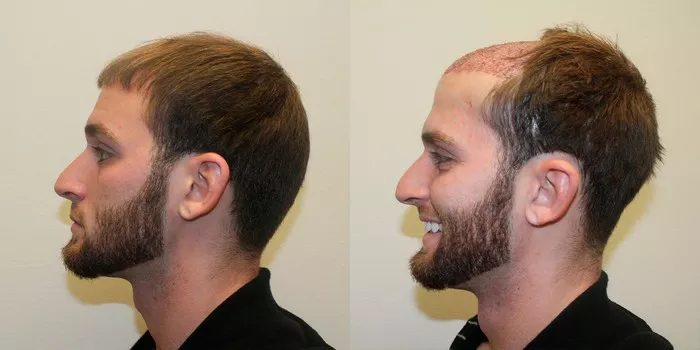Hair transplantation has emerged as a transformative solution for individuals seeking to restore hair and regain confidence. Amid discussions of various transplantation techniques, a common question arises: Can beard hair be transplanted to the head? In this article, we’ll delve into the intricacies of hair transplantation and explore the feasibility of using beard hair as a potential donor source for head transplantation. By understanding the techniques and considerations involved, you can make informed decisions about your hair restoration journey.
Understanding Hair Transplantation
Hair transplantation is a surgical procedure that addresses hair loss by relocating hair follicles from areas of good hair growth to areas with thinning or balding. There are two main techniques: Follicular Unit Transplantation (FUT) involves removing a strip of scalp with hair follicles and dissecting them, while Follicular Unit Extraction (FUE) involves individually extracting follicles. These follicles are then implanted into the recipient site. The procedure is performed under local anesthesia and requires careful consideration of hairline design, density, and natural hair growth patterns. Hair transplantation can provide long-lasting, natural-looking results for individuals seeking to restore their hairline and fullness.
Beard Hair as a Donor Source
The idea of using beard hair as a donor source for head transplantation has gained attention in recent years:
1. Similar Characteristics:
Beard hair shares similar characteristics with scalp hair, including texture and growth cycle, making it a potential candidate for transplantation.
2. High Graft Yield:
Beards often have a high density of hair follicles, allowing for the extraction of a significant number of grafts.
Factors to Consider
While beard-to-head transplantation is possible, several factors must be considered:
1. Color and Texture:
The color and texture of beard hair may differ from scalp hair, potentially impacting the overall aesthetic result.
2. Harvesting Techniques:
The FUE technique is commonly used for beard-to-head transplantation. Grafts are extracted individually from the beard area and transplanted to the head.
3. Design and Planning:
An experienced surgeon will carefully plan the transplantation to ensure natural hair distribution and avoid an unnatural appearance.
Beard to head transplant coverage
Beard-to-head transplant is a specialized hair restoration procedure where hair follicles from the beard are transplanted to the scalp to address balding or thinning. The procedure follows similar principles to traditional hair transplantation. Beard hair is often chosen due to its similarity in texture and quality to scalp hair. It can be particularly useful for individuals with limited donor hair on the scalp. The beard-to-head transplant can offer natural-looking results, but the success depends on factors like donor hair availability, surgical skill, and proper post-operative care. Consulting with a qualified hair transplant specialist is crucial to determine candidacy and potential outcomes.
Expert Consultation
Consultation with a qualified hair transplant surgeon is crucial. A skilled surgeon will assess your hair loss pattern, donor areas, and hair characteristics to determine if beard-to-head transplantation is a suitable option for you. A personalized approach is essential to achieve natural-looking results that align with your goals.
See Also: Decoding Hair Loss: The Appearance of a Receding Hairline
Conclusion:
While the concept of transplanting beard hair to the head holds promise, it’s important to approach it with a clear understanding of the techniques, considerations, and limitations involved. Consultation with an experienced hair transplant surgeon is the first step towards making an informed decision about your hair restoration journey. By exploring the possibilities, understanding the nuances, and collaborating with a skilled professional, you can embark on a path towards regaining your hair and confidence with clarity and insight.
Empower yourself with knowledge, and together with a qualified expert, determine the best course of action to achieve your desired hair restoration outcomes.


